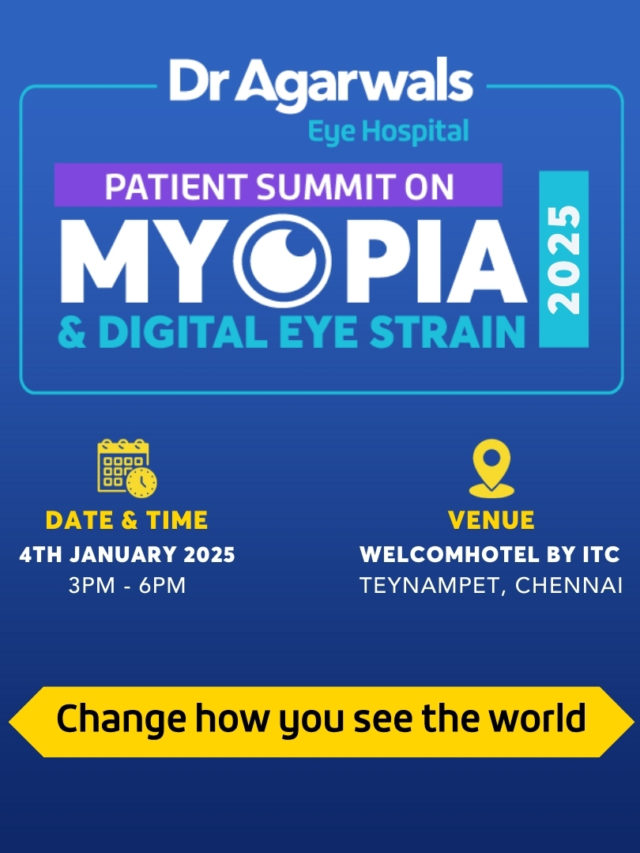Accurately seeing colors plays an essential role in daily life, from reading signs to performing professional tasks that depend on color recognition. The eye color vision test, also called a color vision test or color blindness test, is used to assess how well a person distinguishes colors.
Since color vision deficiency is more common in men and often goes unnoticed, early testing supports better educational outcomes, safer job performance, and improved awareness of eye health. This article explains what a color vision test is, how it is performed, and what color vision test results reveal about your visual health.

Introduction: Why Eye Color Vision Testing Matters
An eye color vision test evaluates your ability to differentiate shades of red, green, blue, and yellow. Many individuals with color vision deficiency may not realise they have it until tested, as the condition does not affect overall visual clarity.
Early eye color vision testing helps detect issues that could impact learning or certain professions. Regular color blindness screening also helps identify underlying eye conditions, such as diabetes or glaucoma, optic nerve diseases like optic neuritis, and traumatic optic neuropathy that can affect color perception.
What Is an Eye Color Vision Test?
Definition and Purpose
The eye color vision test is a quick, non-invasive procedure that determines how accurately a person perceives different colors. It screens for red-green and blue-yellow deficiencies and categorises the severity of the condition.
While online tools can demonstrate how color testing works, only a certified optometrist or ophthalmologist can confirm a diagnosis using a proper color vision test chart and controlled lighting.
Why Eye Doctors Use Color Vision Tests
Eye specialists use color vision tests to detect both inherited and acquired deficiencies. Certain eye diseases, such as glaucoma, optic nerve diseases like optic neuritis, traumatic optic neuropathy, macular degeneration, and diabetic retinopathy, may reduce color sensitivity.
Reliable color vision screening for jobs ensures candidates meet the visual standards required in fields such as aviation, electrical maintenance, or design. Understanding why color vision tests are important enables both preventive care and professional readiness.
Types of Color Vision Tests (and What They Detect)
Color Plate Tests (Pseudoisochromatic Tests)
The most familiar method involves viewing a color vision test chart with multicolored dots that form numbers or shapes. The Ishihara color plate test identifies red-green deficiencies and typically uses 8 to 34 plates.
The HRR plate test detects both red-green and blue-yellow color deficiencies, while the Cambridge color vision test is a computer-based alternative that uses the letter “C.” For children, the Color Vision Testing Made Easy (CVTME) and Neitz Child Color Vision Test provide engaging, age-appropriate formats.
Arrangement Tests
These tests evaluate how well an individual can arrange colored discs or tiles in order of hue. The Farnsworth Munsell 100 Hue Test includes 85 discs to measure fine hue discrimination and identify the type of deficiency.
Shorter versions, such as the D 15 test, or its more sensitive variation, the Lanthony desaturated D 15, detect subtle or acquired changes. These hue arrangement tests are especially useful for monitoring occupational or medical changes in color perception.
Comparison Tests (Anomaloscope)
The anomaloscope color matching test is the gold standard for diagnosing red-green deficiencies. The participant adjusts knobs to make two halves of a circular field appear the same color. It provides precise results but is mainly used in research or specialist clinics rather than general eye practices.
Digital & Advanced Tests
Modern digital color vision tests and colorimeters use screens or sensors to measure how the eye perceives wavelengths of light. These allow for repeatable, calibrated testing.
Innovative AR color vision apps and adaptive technologies can also modify on-screen colors to help individuals with color deficiencies differentiate hues in real time. These advanced color vision testing methods are becoming increasingly useful for workplace and educational adaptations.
How is the Eye Color Vision Test Performed?
Preparation and What to Expect
The color vision test requires no special preparation. Avoid wearing tinted or colored contact lenses during testing, as they can alter perception.
Bring your regular (non-tinted) glasses or lenses for clear vision. The test is painless and typically takes only a few minutes per eye.
Step-by-Step Procedure
For plate tests, you’ll be shown a color vision test chart with patterns of colored dots and asked to identify hidden numbers or shapes. In arrangement tests, you’ll sort colored discs by shade.
During an anomaloscope test, you’ll adjust color intensity until both halves of a field appear identical. The procedures are brief, making them suitable for children and adults alike.
After the Test: Understanding Results
Results are available immediately. Your optometrist will interpret the color vision test results, indicating whether you have a color vision deficiency and, if so, its type and severity.
The interpretation of the color blindness test does not include a pass-or-fail outcome. Honest responses ensure accurate diagnosis and proper management.
Why Color Vision Testing Is Important
Early Detection of Color Vision Deficiencies
Many individuals discover their color deficiency only through screening. Early identification through color vision deficiency tests helps parents and educators adapt learning materials, ensuring that unrecognised visual differences do not disadvantage children.
Identifying Underlying Eye and Health Conditions
Changes in color perception can signal underlying conditions like diabetes, glaucoma, optic nerve diseases like optic neuritis, traumatic optic neuropathy, or macular degeneration. Regular color vision and eye disease screening helps detect such issues early, improving treatment outcomes and preserving vision.
Ensuring Safety and Performance in Certain Professions
Careers such as aviation, rail transport, electrical work, and graphic design require accurate color perception. The color vision test for pilots and other professionals ensures compliance with safety standards and job requirements. Understanding color blindness and its impact on careers helps individuals plan their career paths effectively.
Monitoring Changes Due to Ageing or Medications
Color sensitivity can gradually decrease with age or due to medication side effects. Regular eye color vision testing helps track these changes and ensures timely adjustments to treatment or lifestyle.
Living With Color Vision Deficiency: Management & Support
Corrective Lenses and Visual Aids
Although there is no cure for color vision deficiency, color blindness glasses, such as EnChroma lenses and tinted contact lenses, can enhance contrast and improve color recognition. Some color vision therapy programs and digital aids for color blindness also help users differentiate hues better in daily life.
Adaptive Strategies and Education
Practical adjustments can make everyday activities easier. Label clothing items, use high-contrast designs, and rely on smartphone apps to identify colors. Teachers and employers should avoid color-only instructions and use text or symbols to assist color-deficient individuals.
When to Consult an Eye Care Professional
Visit an eye doctor if you notice color confusion, difficulty identifying shades, or if your job requires precise color perception. Regular comprehensive eye exams, including the color vision test, are essential for children, older adults, and professionals in color-sensitive roles.
Conclusion: Protect Your Vision with Timely Color Vision Testing
The eye color vision test is a simple yet vital tool that assesses how accurately you perceive colors and helps detect any deficiencies. Early testing supports academic and professional success and can also reveal underlying health conditions.
Regular eye exams ensure that changes in color vision are monitored, managed, and supported effectively. While deficiencies cannot be cured, adaptive tools, tinted lenses, and awareness can help individuals enjoy a full and colorful life.








